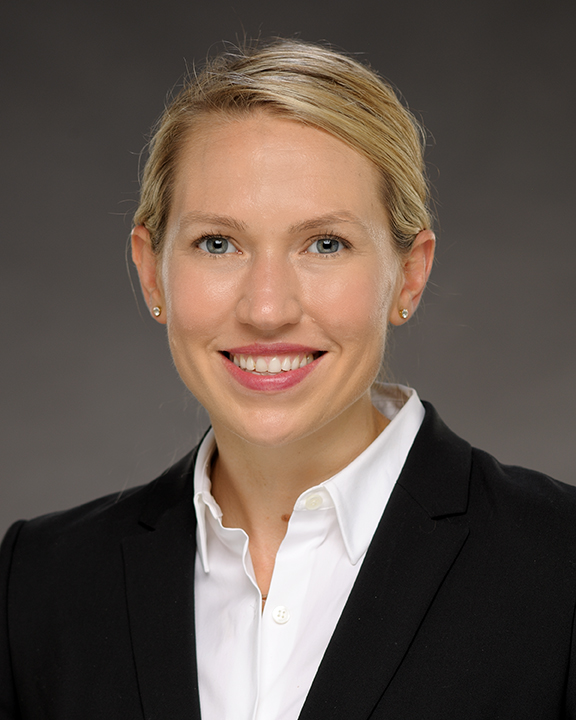The 1115 Medicaid Waiver Program was developed to enable innovation and access to services by waiving the Medicaid rules or law and allow for a programs, benefits or expansion of coverage that would not normally be covered within the state’s Medicaid plan. This allows the states to better tailor the benefits provided by Medicaid to develop programs best suited to serve the needs of their populations. 1115 Waiver Programs may include but are not limited to special programs such as program of all-inclusive care for the elderly (PACE), Medicaid long term care (MLTC), long term support services (LTSS), Behavioral Health Programs, home and community based services (HCBS) for children and adults, and Health Home programs.
One of the common themes across three states, California’s Medi-Cal 2020 Section 1115 waiver and recent California Advancing and Innovating Medi-Cal (CalAIM) program, New York’s expected approval from CMS of its recently submitted 1115 Waiver Demonstration, and Texas’ 1115 Healthcare Transformation & Quality Improvement Program Waiver, is the focus on the importance of the Medicaid beneficiary’s social needs. CalAIM in California specifically calls out the importance of concentrating on social needs and closing gaps in care equity for underserved populations that have only been exasperated with Covid-19. In New York, the state has explicitly said the money is to address both the health and social needs, calling out that the delivery system must reduce racial and ethnic disparities and support the social assistance needed by patients. NY state has recognized the importance of ensuring we have adequately trained workforces to address these issues. In Texas the DSRIP transition plan includes a specific milestone (Milestone #8) regarding the assessment of social factors and their impact to health care quality.
More detail on these important transformation programs in three of the largest states in the country:
California: Cal-AIM
California Advancing and Innovating Medi-Cal is a five-year plan to improve quality of life and health outcomes for Medi-Cal (California’s Medicaid members) through an improved delivery system and payment reform. In order to do this, significant emphasis needs to be placed on integrating social services more seamlessly with the Medi-Cal population.
The three primary goals of Cal-Aim are:
- Identify and manage member risk and need through whole person care approaches and addressing Social Determinants of Health (SDoH)
- Move Medi-Cal to a more consistent and seamless system by reducing complexity and increasing flexibility
- Improve quality outcomes, reduce health disparities, and drive delivery system transformation and innovation through value-based initiatives, modernization of systems and payment reform
Much of the reforms focus in on specific populations including people with behavioral health needs, seniors, people with disabilities, people experiencing homelessness, people transitioning from jail or prison, children with complex medical needs and children in foster care.
Two of the proposed methods to achieve these goals include enhanced care management and community supports (“in lieu of services”). With enhanced care management, members will be offered care in more of a “meets that patient where they are at” model. This will require expanded care management teams to support assessing and delivering care to patients within different settings such as their home, primary care offices and communities to be effective. Community supports “in lieu of services” will require enhanced partnerships with community-based organizations (CBOs) and people to help connect patients to resources in real time.
New York-1115 Waiver
Recently, New York is requesting $13.2 billion to reinvest over five years to address health disparities as well as the systemic health care delivery system and transforming The Medicaid Program approach to paying for services to address both health and social needs. To achieve those goals New York has set the following goals for the program:
- Build a more resilient, flexible and integrated delivery system to reduce racial and ethnic disparities, promote health equity and support the delivery of social care
- Develop and strengthen supportive housing and alternatives to institutions for the homeless and long-term care populations
- Redesign and strengthen health and behavioral health system capabilities to provide optimal response to future pandemics and natural disasters
- Redesign and strengthen system capabilities to improve quality, advance health equity and address workforce shortages
To achieve these goals, New York Medicaid will incentivize health plans and providers to enter into more advanced value based payment arrangements (VBP) proposes new entities to support this transformation and success in VBP. First are the Health Equity Regional Organizations (HERO), planning entities which will receive $7M in annual funding. The second are Social Determinants of Health Networks (SDHNs), which are set to receive $116M in annual funding and will bolster the capabilities of and organize services of community based organizations.
Texas Waiver
The original 1115 waiver took effect in Texas on December 12, 2011, and has since expired. Under the original waiver, there were two separate funding pools:
- The Uncompensated Care funding pool help offset the costs of uncompensated care provided by hospitals and other providers throughout the state
- The Delivery System Reform Incentive Payment (DSRIP) program provided incentive payments to participating providers through the achievement of metrics aimed at improving health outcomes. The program included the development and implementation of projects, strategies and investments to enhance:
- Access to care
- Quality of care
- Cost effectiveness of services and health systems
- Overall health of patients and families
As DSRIP funding neared its end date, Texas was required to submit a DSRIP transition plan to CMS that outlined how the state would further develop its delivery system reform efforts. This plan was finalized by March 31, 2020, and approved by CMS in late August 2022. The transition plan included nine milestones, several of which address social needs.
Milestone three included the development of new programs:
- Texas Incentives for Physician and Professional Services (TIPPS)
- Comprehensive Hospital Increased Reimbursement Program (CHIRP)
- Directed Payment Program for Behavioral Health Services (DPP BHS)
- Rural Access to Primary and Preventive Services (RAPPS)
One of the primary quality goals of each of these programs is to, “Promote optimal health for Texas at every stage in life through prevention and by engaging individuals, families, communities, and the healthcare system to address root causes of poor health.”
In addition to Milestone Three, Milestone Eight required the state to submit an assessment of social factors impacting health care quality. This assessment will help to inform potential new program, policy changes and strategies across the state to improve the overall health of for beneficiaries enrolled in the Medicaid program.
So what does this mean for my organization, even if not located in California, Texas or New York?
Over the last several years, we have seen recognition of the impact of social needs on costs and ultimately overall quality and cost of care within the care delivery system. Solving for SDoH gaps will require not only advanced analytics integrating SDoH data and integration of SDoH services into both network and care model, but also staff to fill new care team and network management roles. We have seen this not only in Medicaid Waivers but also in Centers for Medicare and Medicaid (CMS) and Centers for Medicare and Medicaid Innovation through the new CMS 2030 vision and the CMMI ACO REACH program, both of which include emphasis on closing SDoH gaps.
Therefore, in all states and geographies, not only those with new Medicaid waivers, rapid scale and effective recruitment and training programs will be required to ensure success in value based payment models. Recruitment and training will need to target a broad set of roles from entry level to clinical care manager roles. Workflows will need to be developed and integrated into best practice network and care models in order to enable teams to screen populations appropriately and consistently, connect patients to resources in real time, and bring care to the patients verses the traditional medical office model.
This is complicated by the fact that the COVID-19 pandemic, healthcare providers have seen major hits to their current staffing from extensive burnout and turnover from the stress of COVID impacts over the past couple of years, as well as impacts from “the Great Resignation” affecting many industries.
Below are action steps organizations can began taking to respond to these market forces, specifically around building the necessary health care workforce.
- Assess SDoH needs for current and projected attributed populations and the impact this will have with relation to required changes to care model, workflows, staffing model and network
- Use outputs from this assessment to create a workforce gap assessment by role
- Develop and launch short and long term strategies in parallel to close workforce gaps and enable performance on value based payment arrangements
Short term strategies may include training programs for current staff to allow team members to work at top of scope and provide whole person care across health and social determinant needs. Key questions to ask in developing training programs for current staff:
- Do your RNs manage a panel of patients and supervise care team members? Many RNs have not functioned in this type of lead role before. Simply shifting a bedside RN from clinical practice to leading care management team can lead to workforce challenges and decreased quality of care for patients.
- Are the community health workers able to “meet patients where they are at” (go into homes, community organizations, community gatherings) and screen patients?
- Can the community health workers identify real time social needs and connect patients to appropriate resources? Do they know how to prioritize and escalate? This is much more than just handing someone a piece of paper for a housing facility.
- Are your current entry level staff (care navigators or community health workers) able to understand the basics of healthcare delivery while also learning their role in the care management team quickly? While the basics may seem limited to items like HIPPA, we know it also includes the basic understanding of how to engage with a patient which can take some healthcare workers many years to perfect without adequate training.
Additional short and longer term strategies can include developing a pipeline for the multiple roles within the care team, ensuring consistency and scalability as membership grows, including implementation of rapid scale recruitment and training programs to close gaps and ensure enablement for ongoing performance improvement
Consider asking yourself the following questions to assess your longer-term strategies in place?
- Are there pipeline programs into entry level roles?
- Are there pipeline programs into more advanced level roles that include training and professional growth plans in place to enable internal development and promotion of staff leading to more advanced roles pipeline?
- Are there retention programs in place to ensure you keep your current employees?
Over the last 22 years COPE Health Solutions has been working with health care systems and payers to assess, design and implement best practice care models and networks. Our team has deep experience recruiting and training into entry level and advanced roles, as well as retention programs for all roles, ensuring there are growth plans for the team members to stay engaged in their work and strategies to reduce the burnout. We have trained over 45,000 health care team members across the country.
For more information, please contact info@copehealthsolutions.com.

